How AI caught child abuser who fled to 'paradise'
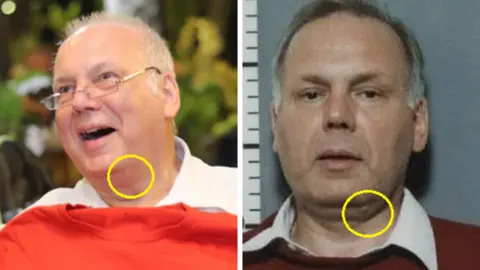 Cheshire Police
Cheshire PoliceA serial paedophile who went on the run for more than 27 years was tracked down thanks to Artificial Intelligence, police have revealed.
Richard Burrows, 81, was jailed for 46 years on Wednesday for 97 charges of child sexual abuse while working as a housemaster at a Cheshire boarding school and alongside scout groups in the West Midlands between the late 1960s and mid-1990s.
Some of his victims said they'd given up hope he would ever be found when he fled the country in 1997.
After other avenues had failed, Cheshire Police last year turned to a website that uses facial recognition technology.
It found him in seconds - in Thailand.
One of Burrows's victims, James Harvey, who has waived his right to anonymity, told the BBC he assumed his abuser would "never be seen again".
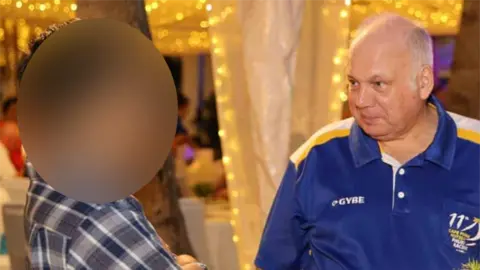 Cheshire Police
Cheshire PoliceIt was 1997 when Burrows failed to turn up to Chester Crown Court, where he was due to enter a plea after being charged with multiple child sexual offences.
Those who'd suffered his abuse as children were preparing to give evidence against him, reliving their trauma.
Burrows had been granted bail at an earlier court hearing, a decision that was not unusual, according to Det Insp Eleanor Atkinson, who led the 2024 investigation.
When police went to his home in Birmingham, they discovered he had recently arranged to sell his car, which along with other clues led them to conclude he had been planning an escape. But there was no hint as to where he had gone.
There were appeals in the media, including three on the BBC's Crimewatch programme, which prompted other victims to come forward, but didn't succeed in locating Burrows.
David - not his real name - saw one Crimewatch appeal in 2011, which he said sent him into "a rage" and led to him reporting what had happened to him as a 13-year-old.
By 2024, it was 13 years after the last national TV appeal and more than 50 years after Burrows began his abuse, but one officer had the idea of using a website to search for him.
 Getty Images
Getty ImagesThis was a website that any member of the public can subscribe to - not some specialist tool for police or security services.
PimEyes uses AI facial recognition technology to crawl the web looking for similar photos.
So detectives uploaded Burrows's 1997 custody mugshot into PimEyes and it found multiple photos of an aged Richard Burrows from his retirement party in 2019, complete with a telltale pimple on his neck.
The photos were on the website of a newspaper based in Phuket, which named him not as Richard Burrows but as Peter Smith.
So PimEyes - a relatively obscure website launched eight years ago in Poland - had taken less than a minute to make the breakthrough that detectives, Interpol and Crimewatch appeals had been unable to for over two and a half decades.
It's a website that is clearly popular with police officers, but privacy and civil liberties campaigners have long raised concerns and want police to be banned from using it and similar sites.
'Lack of scrutiny'
The Metropolitan Police has now blocked access to PimEyes on its official devices, although its officers do have access to other in-house facial recognition systems.
Met Commissioner Sir Mark Rowley came under pressure last year to explain a report that claimed his officers had used it more than 2,000 times in a 90-day period.
Organisations including Liberty, Privacy International, Big Brother Watch and Refuge wrote to him, warning they had "serious concerns" that officers could be "exploiting" the site's AI tech "to track victims, witnesses and suspects absent of scrutiny".
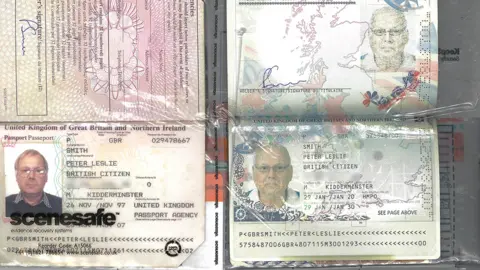 Cheshire Police
Cheshire PoliceDet Insp Atkinson told the BBC the Burrows case demonstrated how sites like PimEyes "can play a vital role in bringing offenders to justice", although she said the force understood "the concerns that have been raised in relation to the use of online facial recognition systems".
PimEyes has previously told the BBC it can help law enforcement agencies combat offences against children, human trafficking, terrorism and war crimes.
The Information Commissioners' Office watchdog said the use of facial recognition technology by police forces must be "necessary and proportionate, and its design must meet expectations of fairness and accuracy".
It recently decided not to investigate Pimeyes, but said it was awaiting "with interest" the conclusion of legal proceedings against the site by data protection authorities in Germany.
After Pimeyes had identified Burrows, police were able to piece together what he'd been doing in Thailand, and how he got there.
Local journalist Tim Newton used to meet Burrows at expat business events in Phuket.
"He was just good old Peter Smith and we all knew him like that - no one had any idea that he had any other name," he said.
"Peter - or Richard - kept this a total secret for the 27 years he was living on the island."
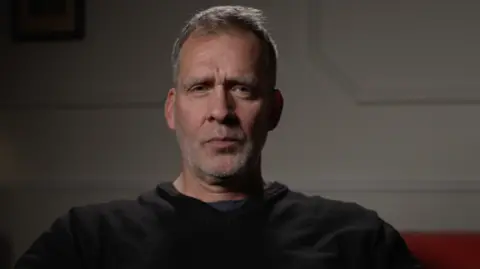
Burrows started in Thailand teaching English, but moved into the media, working in advertising for a company that owns newspapers and websites.
His bosses there have since said they knew nothing about his past.
Cheshire Police found Burrows's method of escape was surprisingly simple.
He had applied for and obtained a genuine passport in the 1990s using his own photo but the name of an acquaintance called Peter Leslie Smith, who was terminally ill.
He had then travelled on that passport and had it renewed multiple times without his real identity being rumbled.
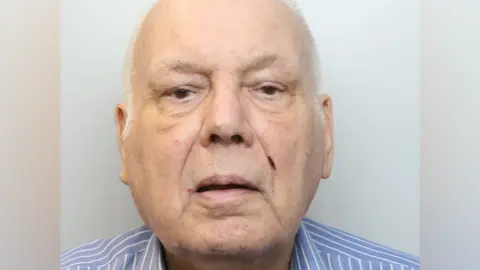 Cheshire Police
Cheshire PoliceGetting Richard Burrows back to the UK was probably the easiest bit, because he came of his own free will.
Officers quickly discovered he had booked a flight from Thailand to Heathrow Airport, so they went to arrest him as he stepped off the plane in March 2024.
He later told his trial he had decided to come back because he had "run out of money".
In his later years in Thailand he was living in a converted shipping container amid various rumours that he had been extorted.
He was convicted a year after he arrived back on British soil and 28 years after he had fled to Thailand - years which he later wrote had been "paradise".
His victim, David, told the BBC he'd had to "bottle up" his emotions for decades.
"I'm really angry that he had 27 good years," he said.
Read more stories from Cheshire on the BBC, watch BBC North West Tonight on BBC iPlayer and follow BBC North West on X. You can also send story ideas via Whatsapp to 0808 100 2230.
